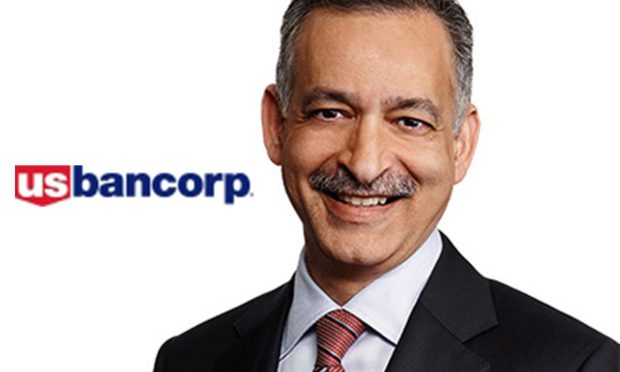Middle-Market Companies Seek Simple Solutions to Complex Business Payments Problems

Crises motivate people, companies, and even entire ecosystems to action.
Shailesh Kotwal, vice chair of payment services at U.S. Bancorp (parent company of U.S. Bank), told Karen Webster smaller and mid-market companies are increasingly embracing — and demanding — holistic solutions from their financial services providers that move far beyond payments to streamline and integrate the business functions surrounding the payments.
Payments used to be bifurcated, and so too were the financial services on offer to mid-market firms — companies with top lines of, say, $25 million to a few hundred million dollars. In short: You went to one part of the bank to open a checking account, then another part to get accounts-receivable solutions. Payments? Well, payments solutions used to be just about being able to send and receive funds.
Times have changed.
In age where work forces are far-flung, where employees have to make purchases out in the field, so to speak, where business is an always-on proposition, the key concerns can be boiled down to: “Can I make the act of consuming whatever it is that the businesses are looking to consume or buy a little bit simpler?”
Moving Toward Consumerization
In that way, he said, B2B payments should be a bit more consumerized, a bit more like the online retail experience we’ve all become more familiar because of COVID-19. Payments should fade into the background: Businesses shouldn’t have to worry about hunting down paper invoices — or about who has to get paid and when and from which account.
“There’s another side to payments that is also being brought to light in the pandemic,” Kotwal said, “which centers on the controls and the management around payments.”
Simply put, he said, B2B activities are more complex than consumer-focused transactions. For instance, as consumers, we don’t have to worry about capturing receipts — but we do when we’re employees buying things for the company or gathering information for an expense report.
There are imbalances between large firms and their smaller brethren, noted Kotwal. Larger companies tend to have policies and procedures in place to dictate spend control. They also typically issue corporate cards, which in turn can make spend management a bit more intuitive. And they always have the leverage to go to their financial providers for what Kotwal termed “bespoke” solutions.
Smaller firms don’t have that; as a result, purchasing and procurement and payments involve a lot more hassle.
To that end, Kotwal pointed to several acquisitions U.S. Bancorp has made to help smaller enterprises integrate better travel and expense management and improved back-office functionality.
Last month, it bought TravelBank, a platform that lets companies avoid using paper-based and manual reporting and travel systems.
Read also: U.S. Bank Acquires Travel Expense Platform TravelBank
The combination of U.S. Bank and TravelBank, he said, will allow U.S. Bancorp to offer a fuller suite of services. By way of example, he said, an enterprise client can issue a card to a prospective employee’s digital wallet, allowing them to book travel and accommodation in order to come in for a face-to-face interview.
At a broader level, he said, “we’ll see things like a request for payments come around — and that’s going to be an interesting journey for businesses too, to embark on. Leveraging the software development capabilities, and the engineering skills, that TravelBank brings allows us to accelerate some of the [digital] journeys we’ve been on.”
Many of the same offerings are available to even smaller companies (with 10 employees) through U.S. Bank’s 2021 acquisition of Bento Technologies. Bento’s accounts-payable-based software complements the bank’s existing Elavon and Talech accounts-receivable solutions, the firms have said.
And, Kotwal noted, integrated, holistic solutions featuring spend management apps can promote more inclusive supplier payments, and more efficient procurement activities.
CFOs, after all, need to control the expenses incurred by a far-flung workforce, stripping away the burden of using personal cards on behalf of the company and submitting paper reports weeks later to get reimbursed.
Digital solutions, remarked Kotwal, can let CFOs push cards to employees with a range of embedded controls — for instance, allowing them to spend $200 at Staples (and only at Staples) though a one-time card that promptly shuts off afterward.
“It’s functionality like that,” he said, “which will help businesses make sure payments are done in a seamless way. Business owners can focus on their businesses and worry less about the back-end closing of the books.” Talech, he said, acquired in 2019, helps firms manage a slew of operational tasks, including inventory management and payroll.
Along with the integration of back-office functions wrapped around payments, he said, we’re moving toward a wider embrace of real-time payments. Moving beyond a world tethered to two-week payment cycles, he said, is good for employees and good for B2B relationships, too (paying suppliers, for example, in real time when deliveries are made).
“The promise of real time really is not just the fact that it’s immediate — it’s super convenient and it’s 24/7,” he said. Real-time payments are also data rich, and that information flow can be ingested and used within the underlying architecture of firms large and small, improving reconciliation.
Looking ahead, he said, B2B will “begin in earnest” the journey to online marketplaces, as real-time payments cement the digital data journey that occurs with the invoice that had been missing in the business world. Education and the network effect will speed up that journey, he said.
“We need to speak to customers in a language that is not rendered in bankers’ terms — but in language that they understand,” said Kotwal. Simplified solutions will best serve the “vast” population of middle-market firms “that need an integrated process that bring payments and data together.”
